Abstract
The serological and secretory immune responses of the chicken to infection with Eimeria tenella were evaluated in terms of various anti-coccidial activities. Serological responses were detected in the forms of precipitating, sporozoite neutralizing, anti-merozoite and anti-schizont antibodies. Similarly, anti-schizont and sporozoite neutralizing activities were found in caecal contents (containing mainly IgA) from infected birds and these also had the capacity to damage second generation merozoites. Moreover, the functional importance of IgA could be implied from the substantial predominance of IgA synthesizing cells in the intestinal immunocyte response as revealed by immunohistology. This was reflected in the immunoglobulin profile of caecal contents, for primary and secondary infection resulted in elevated levels of IgA whilst IgG and IgM generally remained extremely low or were usually undetectable. Taken with the well established lack of correlation between serum antibody and protection, these results suggest that the intestinal secretory IgA system plays an essential role in the protective immune response to E. tenella.
Full text
PDF
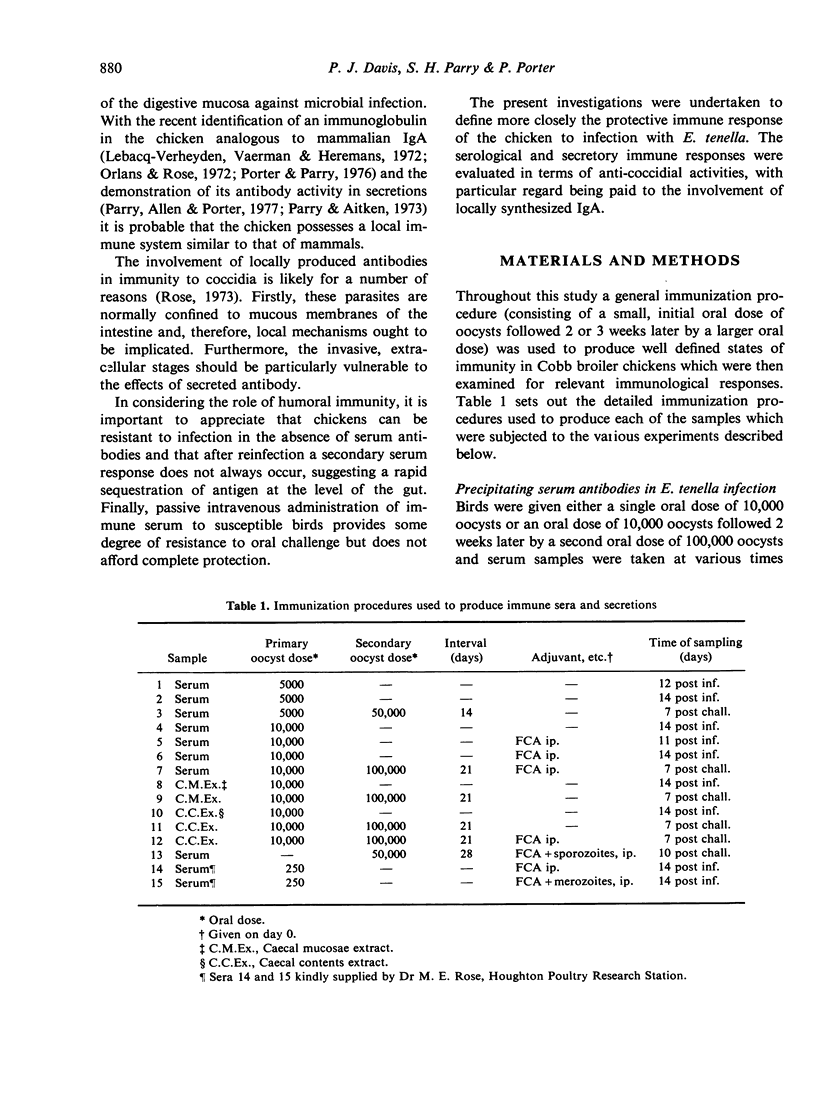

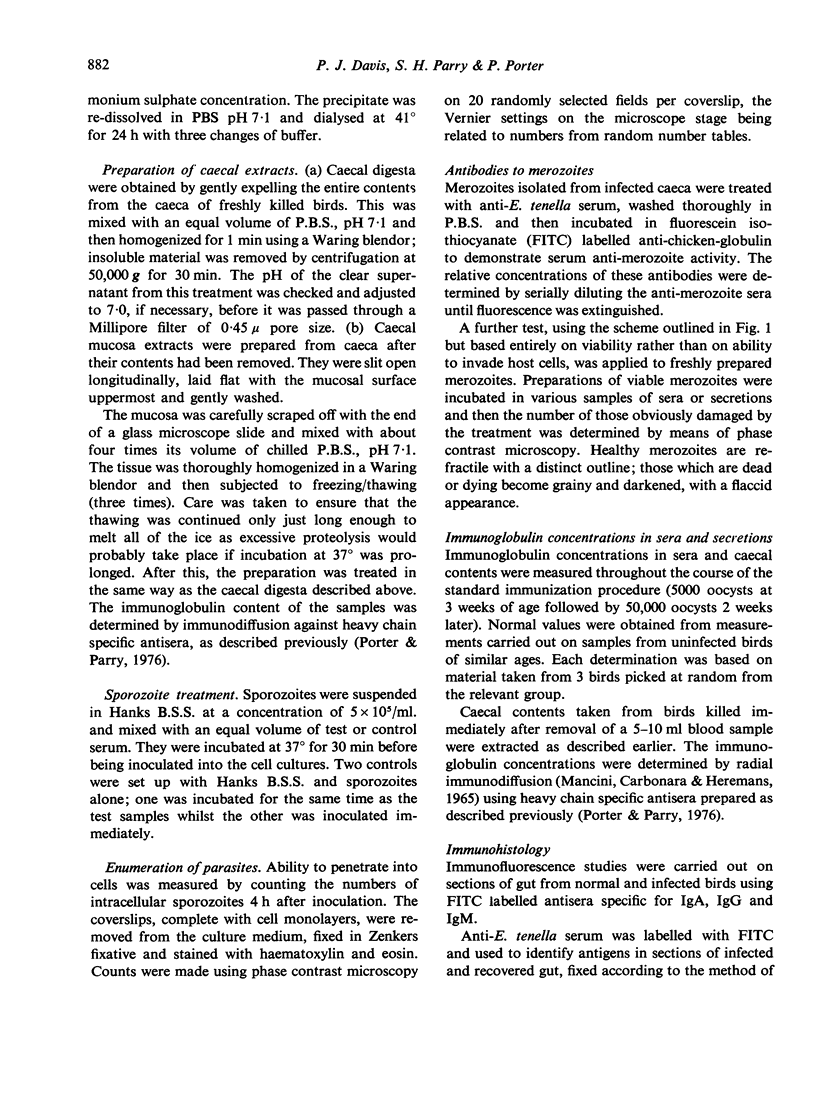
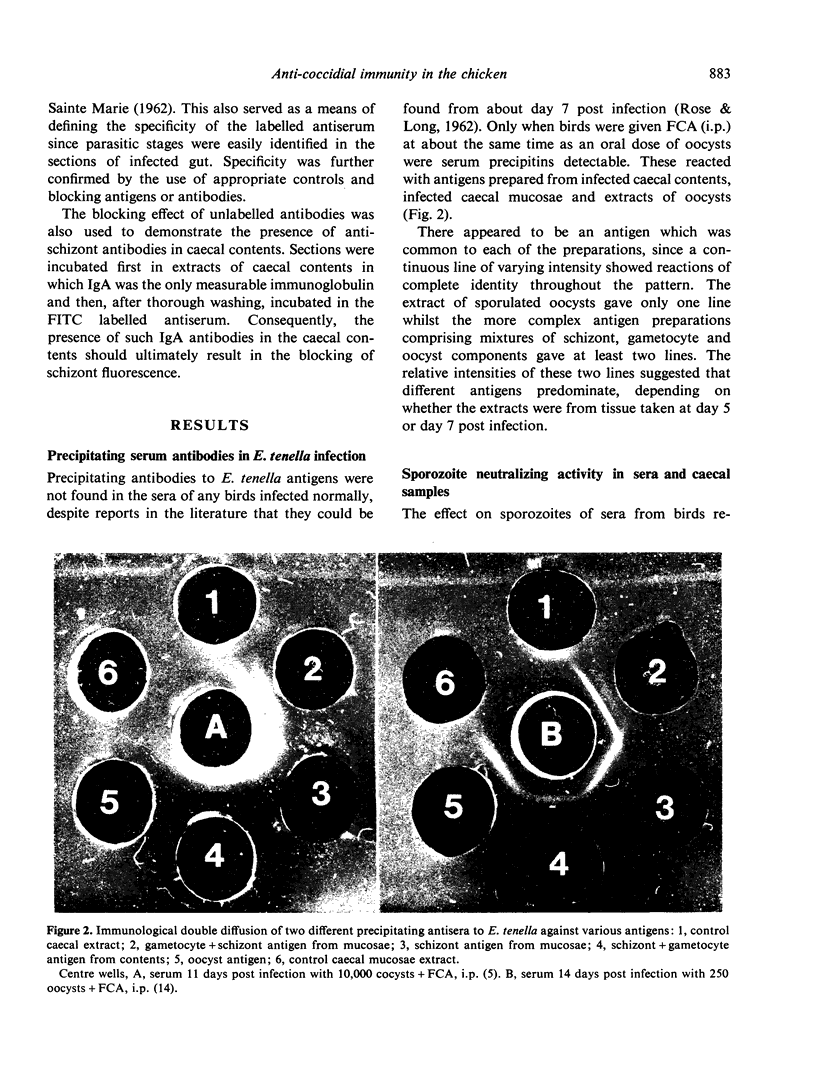
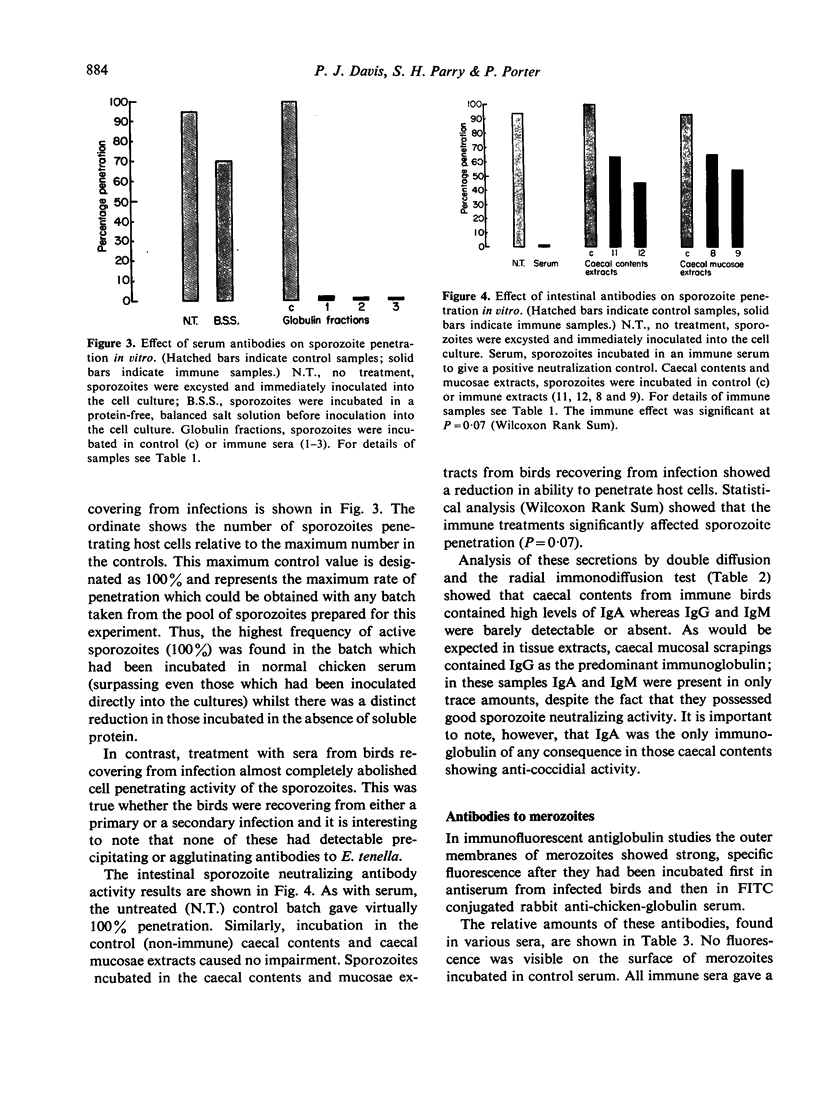

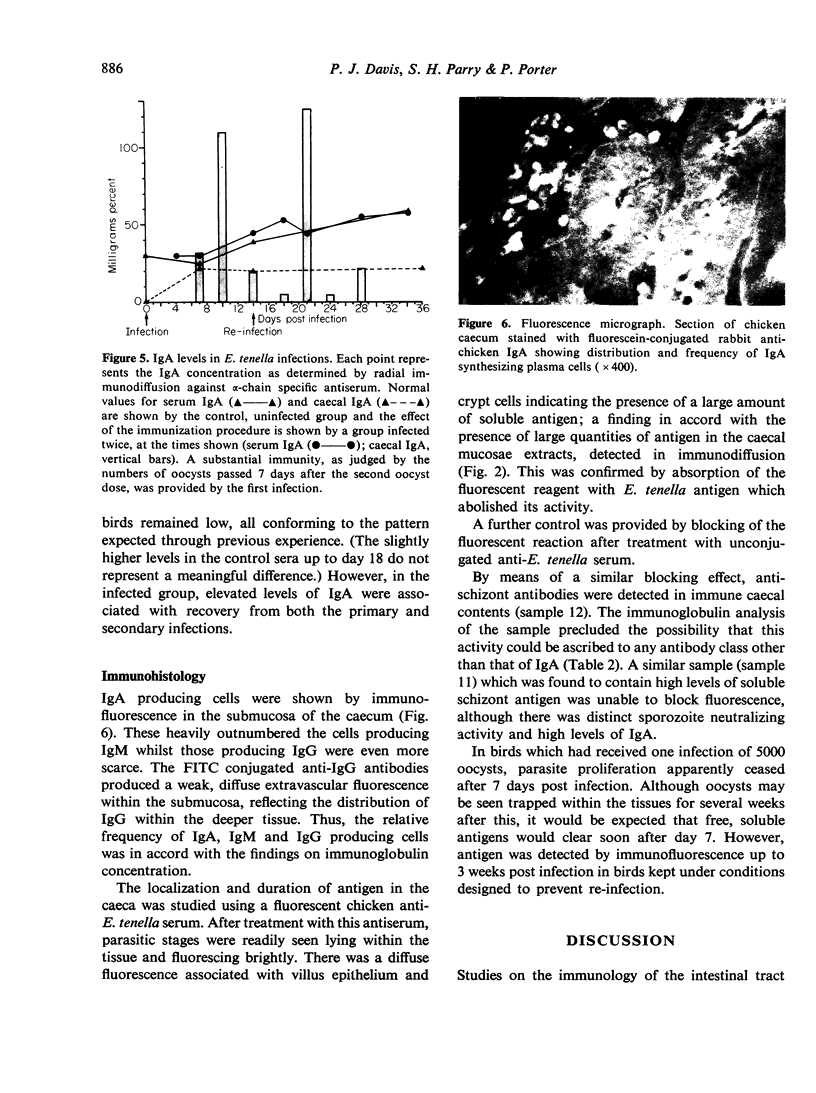

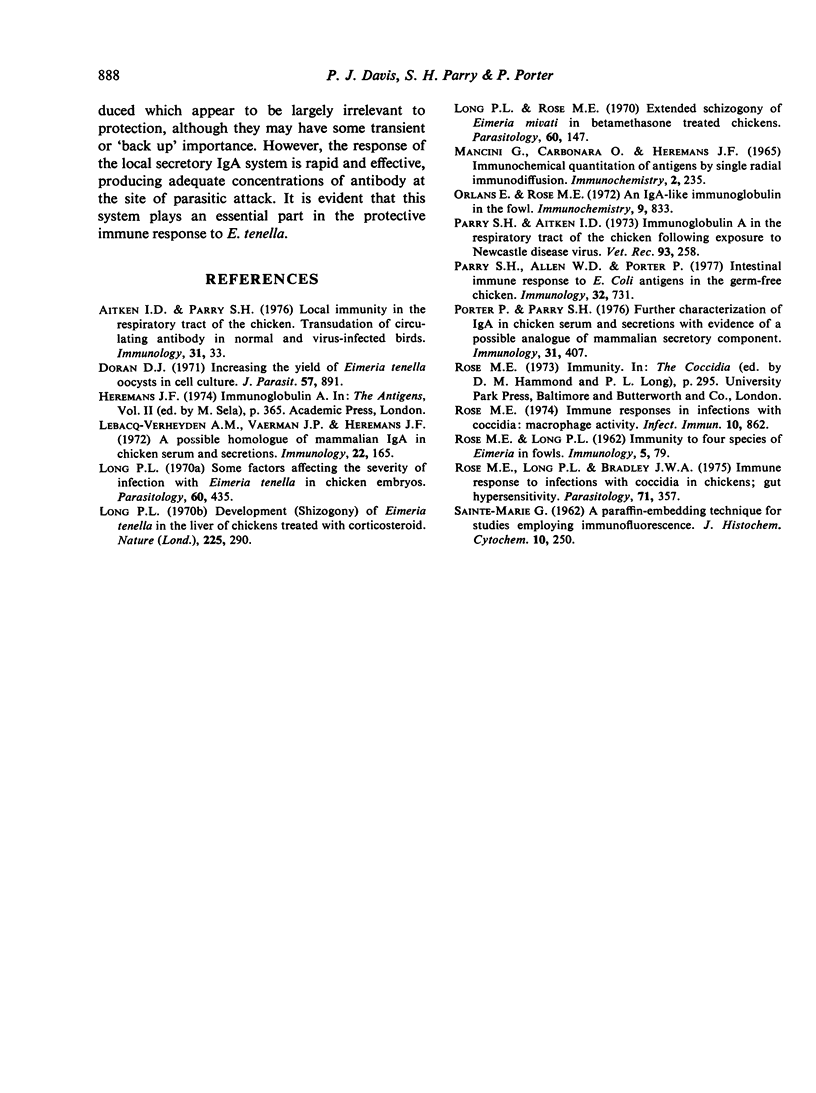
Images in this article
Selected References
These references are in PubMed. This may not be the complete list of references from this article.
- Doran D. J. Increasing the yield of Eimeria tenella oocysts in cell culture. J Parasitol. 1971 Aug;57(4):891–900. [PubMed] [Google Scholar]
- Lebacq-Verheyden A. M., Vaerman J. P., Heremans J. F. A possible homologue of mammalian IgA in chicken serum and secretions. Immunology. 1972 Jan;22(1):165–175. [PMC free article] [PubMed] [Google Scholar]
- Long P. L. Development (schizogony) of Eimeria tenella in the liver of chickens treated with corticosteroid. Nature. 1970 Jan 17;225(5229):290–291. doi: 10.1038/225290a0. [DOI] [PubMed] [Google Scholar]
- Long P. L., Rose M. E. Extended schizogony of Eimeria mivati in betamethasone-treated chickens. Parasitology. 1970 Feb;60(1):147–155. doi: 10.1017/s0031182000077313. [DOI] [PubMed] [Google Scholar]
- Long P. L. Some factors affecting the severity of infection with Eimeria tenella in chicken embryos. Parasitology. 1970 Jun;60(3):435–447. doi: 10.1017/s0031182000078240. [DOI] [PubMed] [Google Scholar]
- Mancini G., Carbonara A. O., Heremans J. F. Immunochemical quantitation of antigens by single radial immunodiffusion. Immunochemistry. 1965 Sep;2(3):235–254. doi: 10.1016/0019-2791(65)90004-2. [DOI] [PubMed] [Google Scholar]
- Orlans E., Rose M. E. An IgA-like immunoglobulin in the fowl. Immunochemistry. 1972 Aug;9(8):833–838. doi: 10.1016/0019-2791(72)90262-5. [DOI] [PubMed] [Google Scholar]
- Parry S. H., Aitken I. D. Immunoglobulin A in the respiratory tract of the chicken following exposure to Newcastle disease virus. Vet Rec. 1973 Sep 1;93(9):258–260. doi: 10.1136/vr.93.9.258. [DOI] [PubMed] [Google Scholar]
- Parry S. H., Allen W. D., Porter P. Intestinal immune response to E. coli antigens in the germ-free chicken. Immunology. 1977 May;32(5):731–741. [PMC free article] [PubMed] [Google Scholar]
- Porter P., Parry S. H. Further characterization of IgA in chicken serum and secretions with evidence of a possible analogue of mammalian secretory component. Immunology. 1976 Sep;31(3):407–415. [PMC free article] [PubMed] [Google Scholar]
- Rose M. E. Immune responses in infections with coccidia: macrophage activity. Infect Immun. 1974 Oct;10(4):862–871. doi: 10.1128/iai.10.4.862-871.1974. [DOI] [PMC free article] [PubMed] [Google Scholar]
- Rose M. E., Long P. L., Bradley J. W. Immune responses to infections with coccidia in chickens: gut hypersensitivity. Parasitology. 1975 Dec;71(3):357–368. doi: 10.1017/s0031182000047132. [DOI] [PubMed] [Google Scholar]




